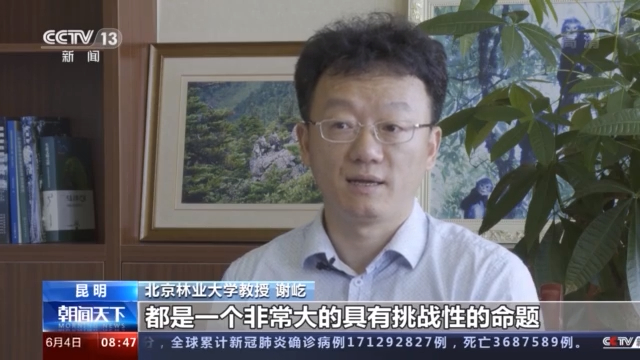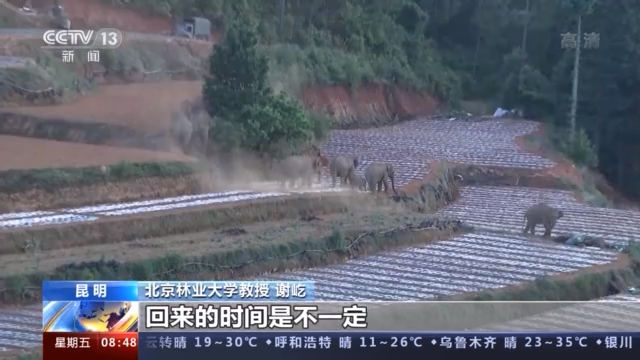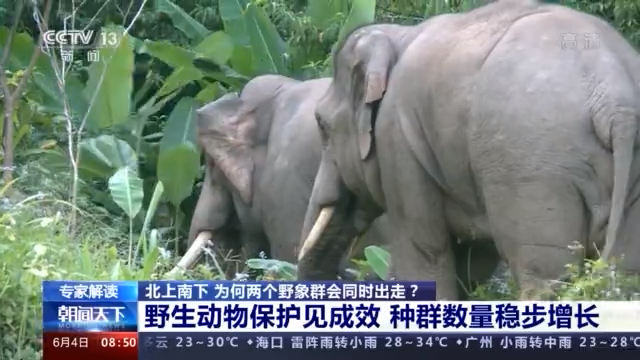Original title: Why did a group of wild Asian elephants move north and two groups of wild Asian elephants move south? Expert interpretation →
In addition to the northern migration elephant group entering Kunming, in the early morning of May 24, monitoring by the Asian Elephant Early Warning System showed that an elephant group with 17 wild Asian elephants tentatively entered the Xishuangbanna Tropical Botanical Garden of the Chinese Academy of Sciences and has stayed so far.
At the same time, two groups of wild Asian elephants left the reserve north and south. What was the reason behind this?
At 21:55 on June 3, after the northern elephant group entered Shuanghe Township, Jinning District, Kunming City, the on-site headquarters held a meeting overnight to study and judge the migration route, and refine the guidance and prevention and control plan. In order to do a good job in the deployment of defenses, the on-site headquarters of Jinning District, Kunming City has adopted measures to “peel the elephant” and “manage people”.
So how should the local “flexible measures” against wild elephants be treated?
What caused this wild elephant group to come to Kunming all the way north?
Xie Yi, member of the front expert group of the National Forestry and Grass Administration, and professor of Beijing Forestry University. Xie Yi feels that there is nothing wrong with the use of containment, food lure, and evacuation of the crowd to modify the travel route of the elephant group to keep them away from densely populated areas to ensure that the elephant does not harm people and people do not harm the elephant.

Professor Xie Yi of Beijing Forestry University: Globally, the conflicts between humans and wild animals, including human-elephant conflicts, are very challenging propositions. Conservation and management measures must be based on a variety of factors and populations. Changes, habitat changes and other factors should be optimized accordingly, but this absolutely does not mean that the measures we have taken are wrong or bad.
So, what caused the Asian elephant to leave the habitat?

Xie Yi told reporters that the number of Asian elephants in China was only 180 in 1985, but now there are 300. The protection efforts are widely recognized internationally.

Xie Yi, Professor of Beijing Forestry University: The northward migration of elephants is a very serious and professional scientific issue. The number of known elephant habitats is still established, but the elephant population is increasing due to our effective protection, and the original food living space cannot satisfy it. For example, the food of three elephant groups in the same area may be completely different.
At present, the 15 elephants that have left Xishuangbanna are still moving north. Then, will more elephants leave their habitat in Xishuangbanna?

Professor Xie Yi of Beijing Forestry University: There are three groups of elephants in the area of Wild Elephant Valley in Banna (Xishuang). These three groups of elephants will move a bit, and they will not be in one place. Moving north from (Xishuang) Banna to Pu’er, some elephant herds will come back, but the time to come back is not certain, some time is long, some time is short, now it is still time to tell whether elephants will move north all the time. Too early.
In addition, from the monitoring of the Asian Elephant Early Warning System, in the early morning of May 24, an elephant herd with 17 wild Asian elephants tentatively entered the Xishuangbanna Tropical Botanical Garden of the Chinese Academy of Sciences and has stayed so far. This group of wild elephants come from the Mengyangzi Reserve of Xishuangbanna National Nature Reserve. If they move further to the core area of Xishuangbanna Tropical Botanical Garden, they will threaten the rare and endangered plants in the Botanical Garden.

At the same time, two groups of wild Asian elephants left the reserve north and south. What was the reason behind this? Professor Zhang Li of the School of Life Sciences at Beijing Normal University analyzed the reasons.
1. Wild animal protection has achieved results and the population growth has been achieved
In the past 20-30 years, my country’s wildlife protection has achieved certain results. Poaching of endangered species of elephants in the wild has been eliminated; people’s awareness of protection has continued to increase, and the drive and artificial disturbance of wild elephants has decreased, and the elephant population has been reduced. The overall number has grown.
2. The contradiction between the reduction of habitat outside the reserve and the intensification of economic development
Outside of the protected area, elephant habitats have been greatly reduced, and the (habitat) has been transformed into tea plantations and rubber forests. The conflict between wildlife protection and our local economic development has become increasingly intensified.
Do a good job of manual intervention and population management of Asian elephants as soon as possible to strengthen habitat protection and restoration
It is necessary to consider the restoration and transformation of the habitats of Asian elephants and other wild animals as soon as possible, and contiguous fragmented Asian elephant habitats through the construction of ecological corridors. Professor Zhang Li believes that the protection and restoration of habitats is a very important one, fundamentally solving the problem of Asian elephants’ proliferation and migration.
.
